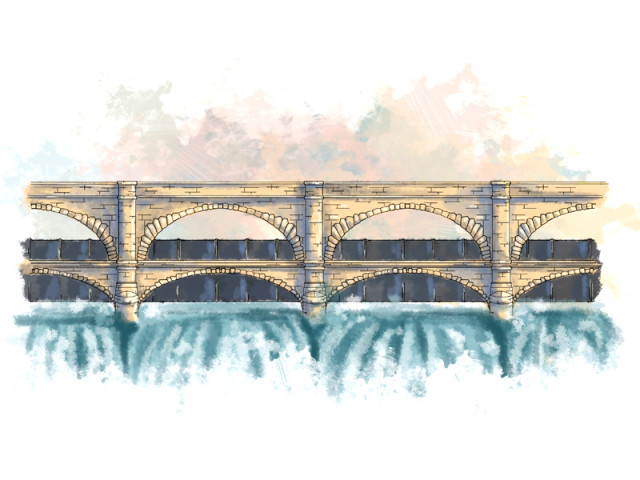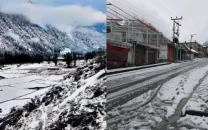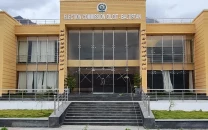Chipping away at history: Ancient rock carvings falling prey to disfigurement
Ads, slogans have been painted on the relics already under threat from Diamer-Bhasha Dam reservoir.

The site expected to be submerged by the dam’s reservoir is reportedly home to thousands of pre-historic inscriptions in Brahmi, Sogdian, middle Persia, Chinese, Tibetan and even ancient Hebrew. DESIGN: ALI DARAB & JAMAL KHURSHID
This is slated to happen at least a decade from now when the dam is ready to begin production. However, negligence on the part of locals and government departments is hastening the elimination of precious historic art and depictions, especially along the Karakoram Highway. Graffiti and advertisements have been painted over several ancient inscriptions, some dating back to the ninth millennium BCE (roughly the late Stone Age).
“There have been a growing number of incidents of slogans painted on rocks carved with ancient inscriptions,” said Mujeeb Ahmed, a resident of Chilas. “This is perhaps because locals are not aware of the historic significance of these inscriptions.”
Mostly, the writings and art are engraved on big boulders or cliffs and cannot be relocated, while many have been damaged by excavation and painted messages, a problem which seems to have escaped the relevant officials’ attention.
“We do not have reports of new graffiti. But there are standing orders against drawing or painting over the rock inscriptions,” said Home Secretary Sibtain Ahmed, adding if they find any such violations they will take action.
The site expected to be submerged by the dam’s reservoir is reportedly home to thousands of pre-historic inscriptions in Brahmi, Sogdian, middle Persia, Chinese, Tibetan and even ancient Hebrew.
According to a report prepared by the Water and Power Development Authority (Wapda), areas with the most important rock carvings are close to Chilas, Thalpan, Ges Bala and Ges Pain and Shing.
The 2009 report titled Impact on rock carvings and proposed mitigation states more than 31,000 rock carvings — on more than 5,000 stones — have been inventoried in the project site and will be submerged by the reservoir. Access to these carvings and inscriptions is difficult, making the relocation of heavy stones and boulders for preservation a non-feasible idea.
The report suggests the basic approach should be to document the most important (from the scientific point of view) rock carving objects. “The selection of 125 carvings under this category has been made by German scientists as a result of an understanding reached with the Department of Archaeology and Museums, Government of Pakistan.”
Published in The Express Tribune, February 5th, 2015.


















COMMENTS
Comments are moderated and generally will be posted if they are on-topic and not abusive.
For more information, please see our Comments FAQ